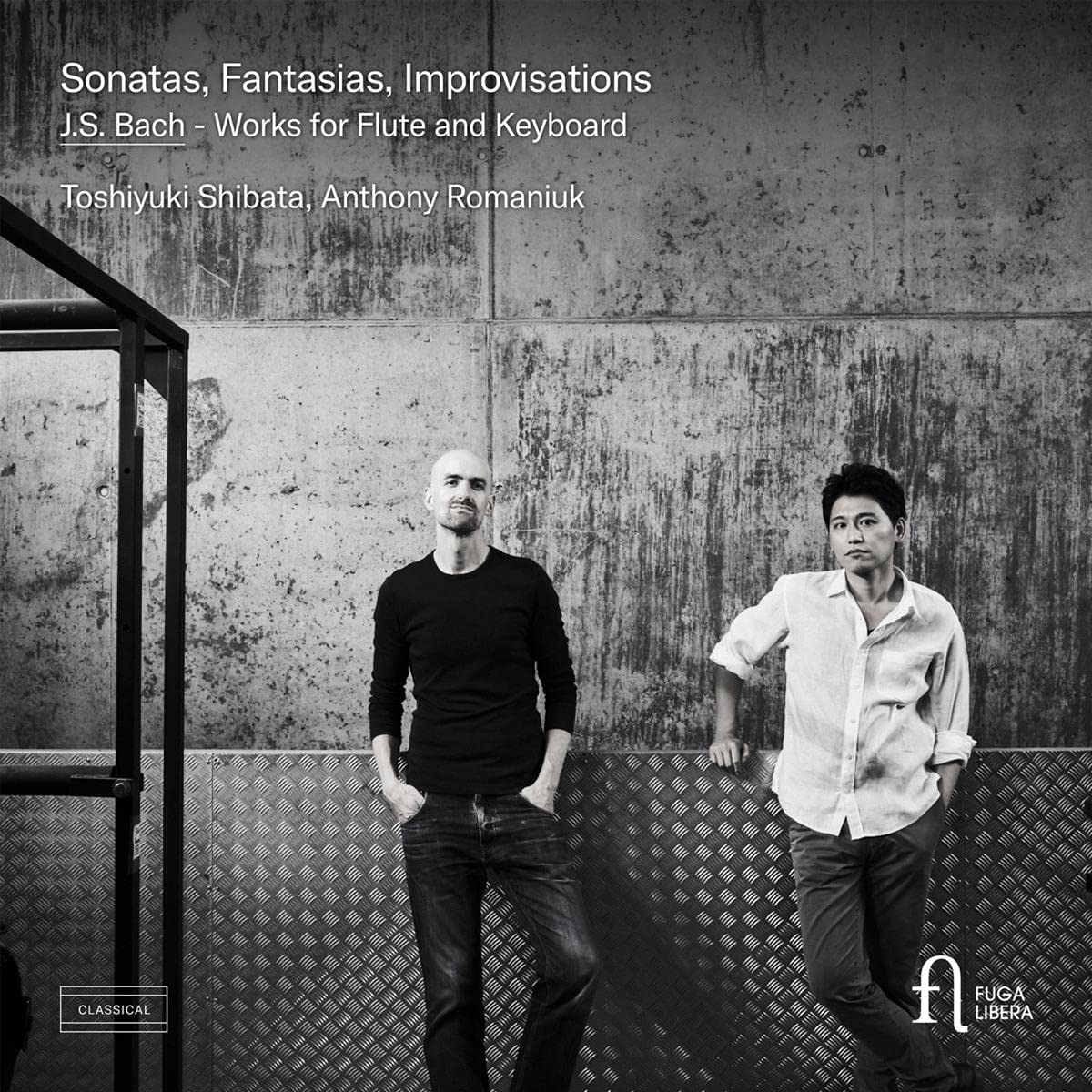Sonatas, Fantasias, Improvisations
Toshiyuki Shibata flute, Anthony Romaniuk fortepiano
58:30
Fuga Libera FUG 792
Click HERE to buy this on amazon,co.uk
[These sponsored links help keep these review FREE TO VIEW]
These two artists met in the summer gap in the 2020 lockdown in Antwerp, and agreed to get playing together. Both were baroque musicians and also jazz players, used to improvising. The result is this CD centred on Bach’s Flute Sonatas in E, E minor and B minor, for which Shibata commissioned a flute after Quantz as well as one after Eichentopf from around 1720. The harpsichord used by Romaniuk is by Detmer Hungerberg while the fortepiano after Silbermann used in the B minor sonata is by Kerstin Schwartz-Damm and has an intriguing variety of stops and makes an ideal partner to the Quantz flute. The pitch they play at is 402Hz after Quantz, which gives a lovely relaxed and unhurried feel to their playing.
In addition to their Bach sonatas, they introduce their improvisations, observing that often a piece was preluded in the 18th century, and that a baroque score was often more akin to jazz lead-sheets, where not only was a degree of ornamentation expected but in realising the basso continuo sometimes an additional melodic line was contrived more in the style of the right hand part in BWV 1030.
Before the purists sniff at this performing style, I urge them to listen to the results of this collaboration and decide whether this style of music-making does not have a good deal to teach the most HIP of practitioners, even if we might do it slightly differently. Bach was celebrated for being able to improvise an extra voice to a complex polyphonic structure whether in the right hand of a keyboard continuo instrument playing in a sonata or a violin descant to a chorale, as in many of the Weimar period cantatas. I have learned a lot about his compositional style by watching him at work in these modes as he crafted the organ chorale preludes, which, like the solo keyboard compositions, most likely had their origins in improvisations in preluding a chorale for Lutheran worship.
So while I put this CD aside while I made room for other more obviously attractive discs I had been sent, I am grateful for having heard it, and glad of the stimulus as well as the opportunity to eavesdrop on two able and thoughtful musicians at work as they ponder the place of what is now called improvisation in the performance of the high baroque.
David Stancliffe
